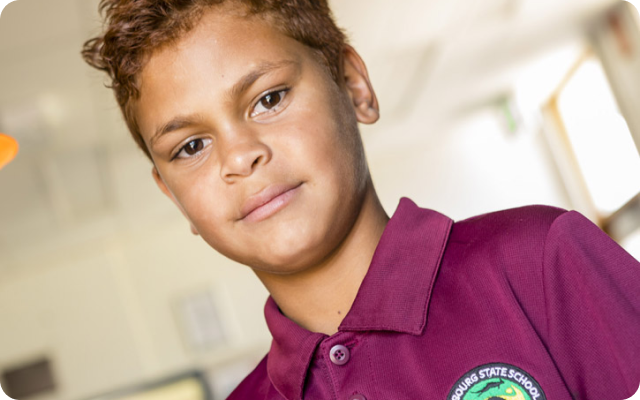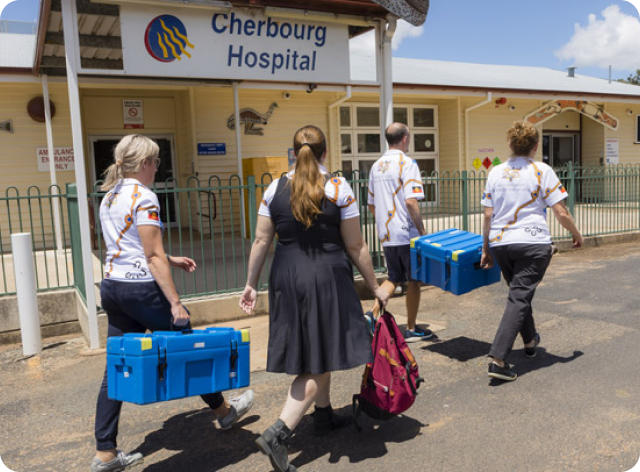Jamarl had poor hearing and would rarely speak when he first attended the Deadly Ears clinic in Cherbourg in February 2018. The then eight-year-old had been living with a perforated eardrum (holes in his eardrum) for at least three years, which meant every voice and sound he heard was muffled. This hearing loss made it hard for him to participate in lessons like his classmates at school, and his learning was suffering. Even engaging with his family and community proved challenging.
Jamarl’s story is not unique. Aboriginal and Torres Strait Islander children have some of the highest reported rates of middle ear disease and associated conductive hearing loss in the world.

“Approximately 70 per cent of the children referred to us present with some sort of middle ear disease or hearing loss,” says Matthew Brown, director of the Deadly Ears program, which delivers specialist ear and hearing health services for Indigenous children in 24 Queensland communities.
Last year the multidisciplinary team performed more than 1200 ENT health assessments, 1150 audiology assessments and 106 surgeries in outreach clinics.
"We take the expertise and care to them, and work with children and families in their communities to make sure they can hear early and hear well and fulfil their potential" Matthew says.
With Jamarl, the Deadly Ears outreach team diagnosed the problem and provided him with the corrective surgery he needed in the same week, and within his home community. The surgery, a myringoplasty, involves having a graft to repair the hole in the eardrum. Jamarl had the procedure on his left ear in February 2018, and then required another on his right ear in August 2019.
The procedure is relatively quick, performed in just under an hour by ear, nose and throat (ENT) surgeons but the result has been life-changing for Jamarl.
At his last follow-up appointment with the Deadly Ears team in February 2020, Jamarl’s two ear drums were intact and his hearing was found to be within normal limits.
“He’s a different boy to the one who walked into the clinic in 2018,” says Deadly Ears nurse Kirsten Bagley, who has helped Jamarl and his family along his journey.
"This is the beginning of great things for Jamarl"

The Deadly Ears program
The Deadly Ears program is part of the Deadly Kids Deadly Futures initiative, which aims to improve the health, early childhood development and education outcomes of Aboriginal and Torres Strait Islander children in Queensland. The initiative uses artwork by Margie Lankin featuring a turtle across its resources which represents the ear. Like turtles who swim silently under the surface of the rivers and oceans, childhood hearing loss and middle ear disease are silent – you don’t know it’s there unless you look.